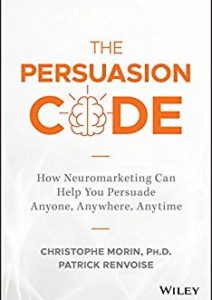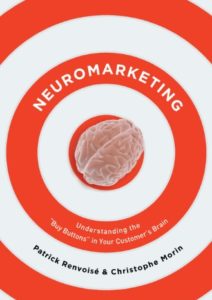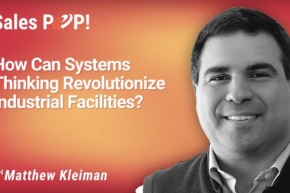How Neuromarketing Can Help You Persuade Anyone, Anywhere, Anytime
Patrick Renvoise’s new book, The Persuasion Code: How Neuromarketing Can Help You Persuade Anyone, Anywhere, Anytime, was just released. It’s been 16 years since Patrick Renvoise published his first book on neuromarketing, which took the business world by storm. Interviewed by John Golden, Renvoise shares information about neuromarketing and persuasion in this expert sales interview.
This expert sales interview discusses:
- Defining neuromarketing
- The success of neuromarketing over the last 16 years
- The interpretation model
- Using key stimuli to market better
- Simplifying the science
What is Neuromarketing?:
Traditional marketing is about asking people what they want, and then creating product development, sales strategies, and marketing strategies, around what people reported they wanted. The problem with this is that people don’t really know what they want. Billions of dollars get wasted on failing marketing campaigns because of the incorrect assumption that people can tell us their true desires. Nearly two decades ago when neuromarketing first began, it presented a new conclusion: If people don’t know what they want, we can measure physiological changes on the body to get an accurate indication of preferences. This will save money and make marketing campaigns more effective. The promises made by this new technique seemed too good to be true.
Does Neuromarketing Live Up to the Hype?:
Neuromarketing, unfortunately, has not quite delivered on its promises. One of the reasons for this is that it’s quite simple to gather data. It’s easy to put electrodes heads, ask people questions, and gather their physiological measurements. However, actually infiltrating those measurements, and delivering marketing insights that generate real results, was more complicated than expected. “It took us about 15 years to realize that without an interpretation model, people do not really see the benefits of neuromarketing,” said Renvoise. “That is the subject of our second book. We say, ‘yes, neuromarketing is great, we can measuring these things, but do not expect to get miracle results, especially if you’re not using an interpretation model.’”
The Interpretation Model:
The model is based on the work of Daniel Kahneman, who won a Nobel Prize in Economic Sciences in 2002, and the fundamental discoveries that he and his team have made. One of these discoveries is that we have two personalities: a rational personality and a primal personality. Kahneman divided these into two systems. System one is the primal personality, driven by the unconscious brain that is in charge of digestion, breathing, and other lower level body functions. System two is the rational brain, which is much more evolved. Although humans might think we make decisions using the rational brain, the reality is that the primal brain has more of an impact on the rational brain than vice versa. The primal brain can only be triggered by six certain stimuli.
Marketing with Stimuli:
So, is your company communicating to your customer’s primal brain? Or rational brain? One of the six stimuli that trigger the primal brain is visualization, yet most companies communicate using words. You can go onto their website and see a long text-based explanation about what they do or provide. “I’m not suggesting you need a visual product, but you do need to develop a visual that becomes a symbol for your value proposition,” said Renvoise. For example, if you are trying to persuade a prospect that your value proposition will save them money, you might include a picture of a bank note, or a safe, that will provide a visual representation of saving money. This will be more effective than writing the words “save money,” because the photo will engage the part of the brain most responsible for decision making.
Is Neuromarketing Usable for Everyday Companies?
Neuromarketing, at first blush, sounds like a complicated endeavor. But in reality, it’s a concept that can be used by anyone; you don’t need a neuroscience degree to understand and apply the techniques. At its core, neuromarketing is about understanding how people use their brains to make buying decisions. It’s not just about science. It’s about simplifying that science to make it accessible and usable for sales and marketing organizations. Renvoise’s goal for his book was to simplify the “neuro” part of neuromarketing so that the “marketing” part could be used in the business world.
To learn more about neuromarketing, watch the full expert sales interview, and check out Renvoise’s first interview on neuromarketing.
About our Host:
John is the Amazon bestselling author of Winning the Battle for Sales: Lessons on Closing Every Deal from the World’s Greatest Military Victories and Social Upheaval: How to Win at Social Selling. A globally acknowledged Sales & Marketing thought leader, speaker, and strategist. He is CSMO at Pipeliner CRM. In his spare time, John is an avid Martial Artist.









Comments